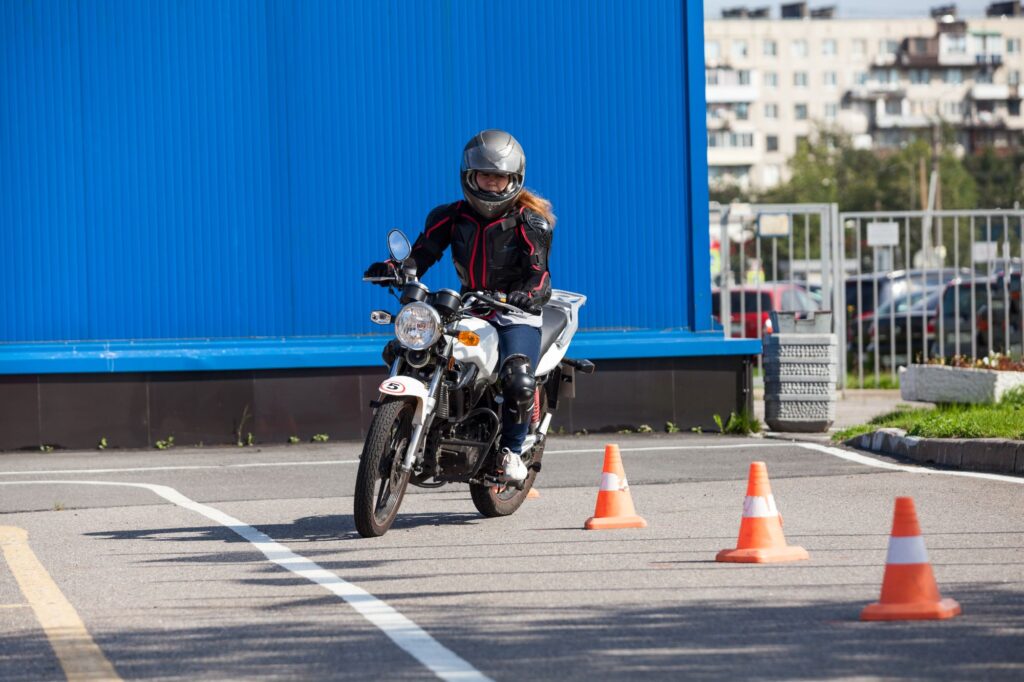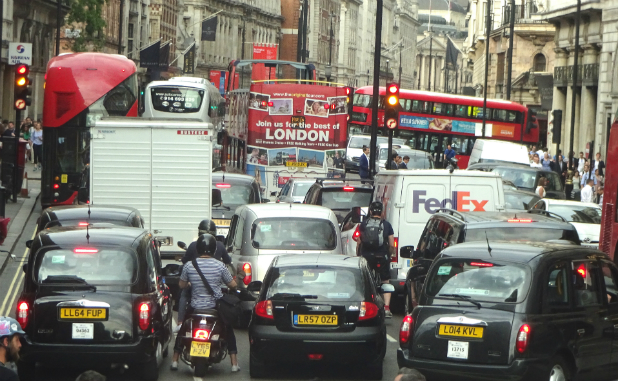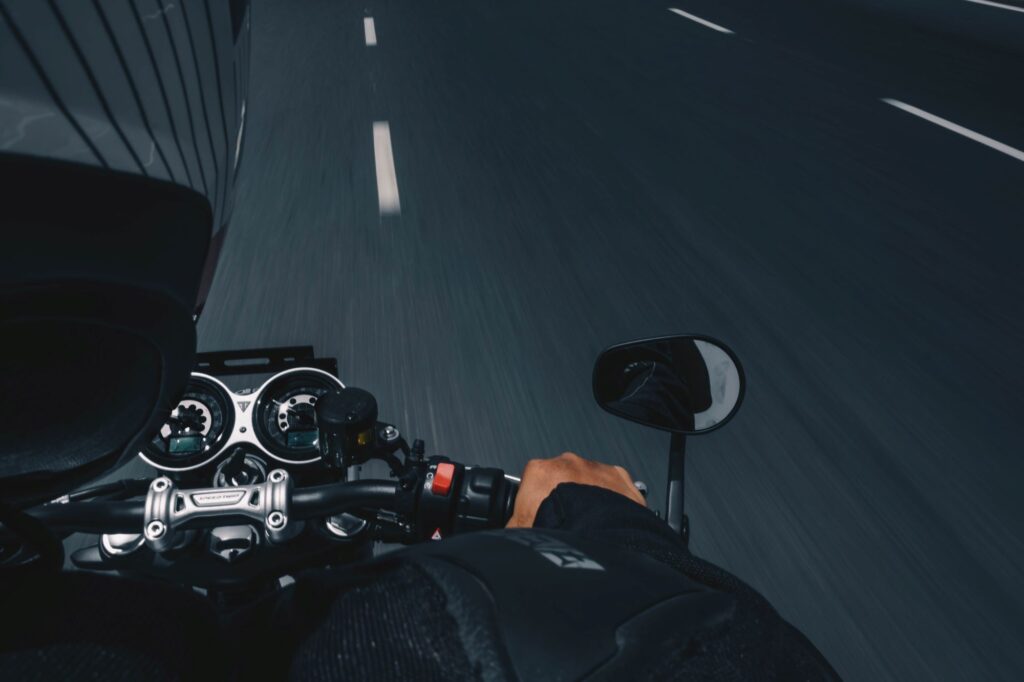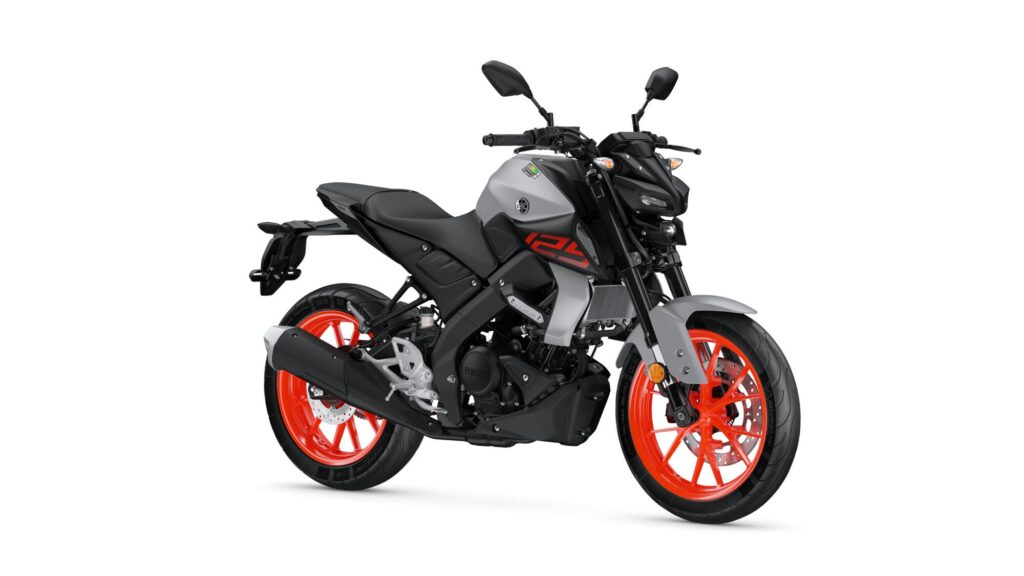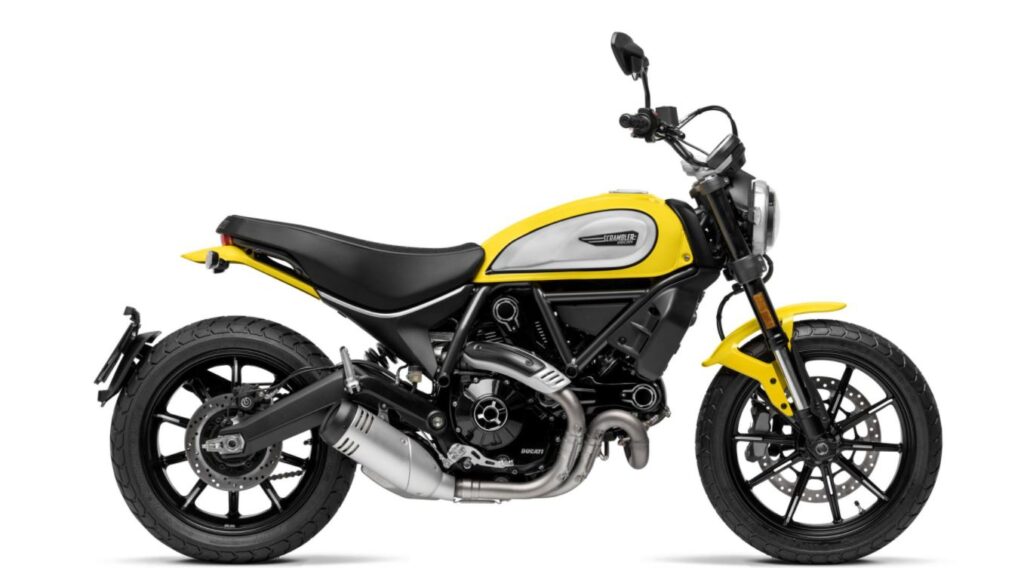
The winters can be long, hard, cold and very wet for bikers in this country, but how can you stay safe while motorcycling in the rain?
Manufacturers are striving to make safer bikes with equipment evolving rapidly — the three main factors to aid safe biking in the wet being tyre technology, traction control and ABS.
But the manufacturers can’t do everything. You will ultimately have to rely on yourself and your own skills to stay safe while motorcycling in the rain. The team at Bikesure have come up with 10 tips and techniques for wet weather riding.
1 See and be seen when motorcycling in the rain
Just about the most important thing when you’re motorcycling is to see and be seen — that’s just as important in fair weather as it is when the heavens have opened.
Check your lights before every trip and if any bulbs are fading or gone, replace them. You should also ensure you wear something high-vis, get an anti-fog visor, and ensure your windshield and mirror are clean.
2 Check your tyres
To keep safe when motorcycling in the rain it is imperative that your tyres are in good condition.
Make sure they have sufficient tread and the correct air pressure. Get in the habit of inspecting them and checking the air pressure every time you go out on your bike.
Remember that tyres take longer to warm up in the rain — some riders swerve to warm them up but that rarely works. Stop and go riding is the ultimate technique to warm tires, and can help put heat in them quicker in the rain.
Have your brakes checked regularly too. If you don’t have the know how to do it, learn, or go to a garage.
3 Get waterproofed for motorcycling in the rain
Comfort is a big issue when motorcycling in the rain but it’s not very comfortable riding if you are soaked through to the skin. If you get wet and cold you will tire more easily and get distracted from the job in hand, staying safe on your bike.
Invest in some good quality waterproof gear. As well as over-trousers and a jacket you will need waterproof gloves and boots. And wear plenty of layers beneath them to maintain body heat in the worst that winter has to throw at us.

4 Double your stopping distance
If you’re riding at 50 miles an hour in good road conditions it will take you about 175 feet to stop, that’s roughly the length of nine cars. In the rain your stopping distance will lengthen significantly and there is always the chance you’ll go into a skid if you pull up suddenly. Double the distance between you and the car in the front to stay safe when motorcycling in the rain.
It’s good technique to ride with two fingers covering the brakes and, always in the wet, apply both front and rear brakes simultaneously, gently but firmly, smoothly and progressively.
In fact, all transmissions on the bike should be smooth to avoid the risk of skidding. No aggressive acceleration, hard braking, or sharp corners, take a smooth line in the road.
5 Corner: slow in, steady out
Cornering in the wet is no different to cornering in the dry, except you need to do it a little more slowly. To negotiate a bend or corner you need to steer and adjust your body position to lean gently into the corner.
Your speed will also play an important part in your ability to corner safely in the wet – it’s “slow in, steady out” when motorcycling in the rain.
6 Watch out for skid hazards when motorcycling in the rain
Rain makes the road surface slick, and some areas are much more dangerous than others — painted lines, manhole covers, and metal bridge expansions can be perilous.
Avoid standing water and puddles too. They’re not too hazardous in themselves, but they can hide what lurks beneath. A puddle can cover manholes, road markings or potholes, so try to avoid riding through them if you can do so safely.
Oil is hazardous in the dry as well as the wet but at least in the wet you can see it because it exhibits a rainbow sheen on the road – you won’t find a pot of gold at the end of the rainbow so avoid it when motorcycling in the rain.
7 Find a dry riding line
If the rain stops and you see a dry line in the carriageway, usually the wake of car or lorry tracks, use it to your advantage.
8 The first few minutes motorcycling in the rain are the worst
The first 10 or 15 minutes are the worst when you’re motorcycling in the rain because oil, fluid, fuel and muck is deposited on a road over time. When it rains, these deposits mix with the water and sit on the road surface making riding more treacherous.
But they usually wash away within 10 or 15 minutes. With that in mind, take a breather, pull over, rest up, and see out the first few minutes of the storm before continuing on your journey.

9 Think ahead
The earlier you identify hazards — puddles, slippery road markings, corners and oil spills — the more time you have to adjust and minimise their effect. Remember, in the wet your braking and stopping distances are longer.
If you don’t think ahead and are slow to react to corners and other hazards you will have to brake sharply which is something you really should try to avoid when motorcycling in the rain.
10 Hold your horses when motorcycling in the rain
You want to get there safely, it doesn’t really matter how quickly you do it! Slow down to stay safe when motorcycling in the rain.
By riding a little more slowly you’re putting less stress on your tyres and traction is less of an issue. It also gives you more time to react and adjust to possible hazards.
Keeping you covered, come rain or shine
The team at specialist motorcycle insurance experts Bikesure will be on hand to provide first class cover for you and your bike, whatever you ride, whatever the weather. Call 0333 257 4035 for a free no obligation quote — our best rates are usually only available over the phone.

